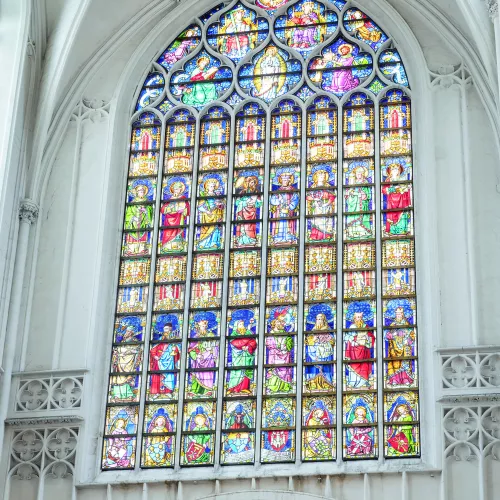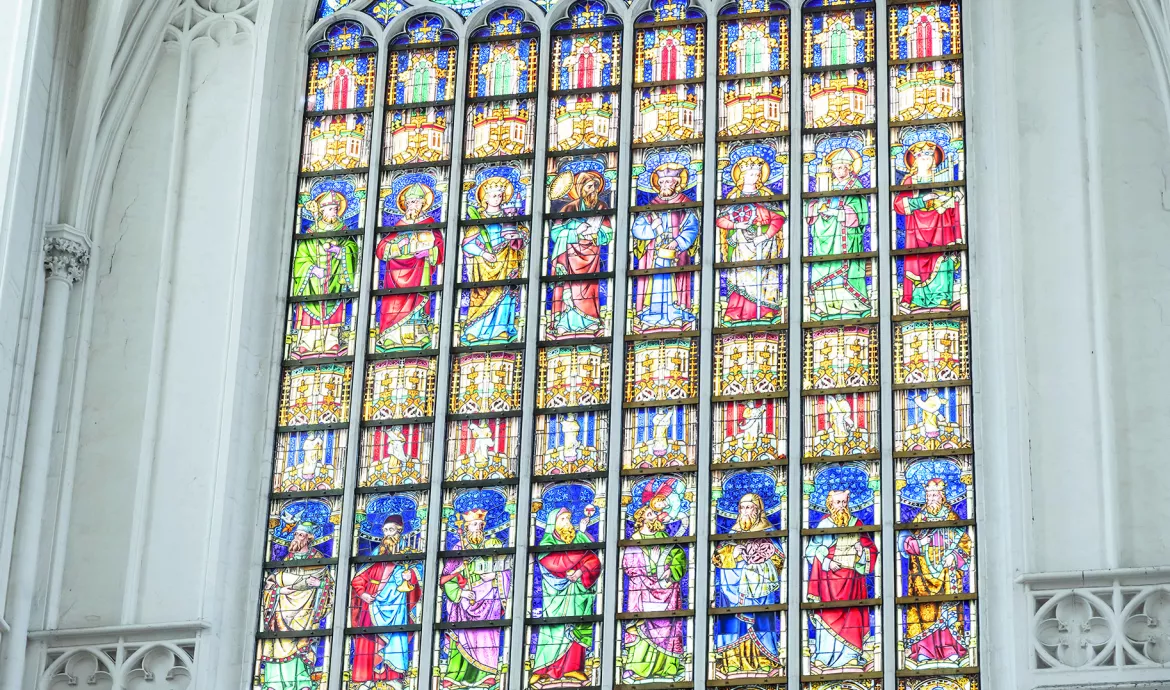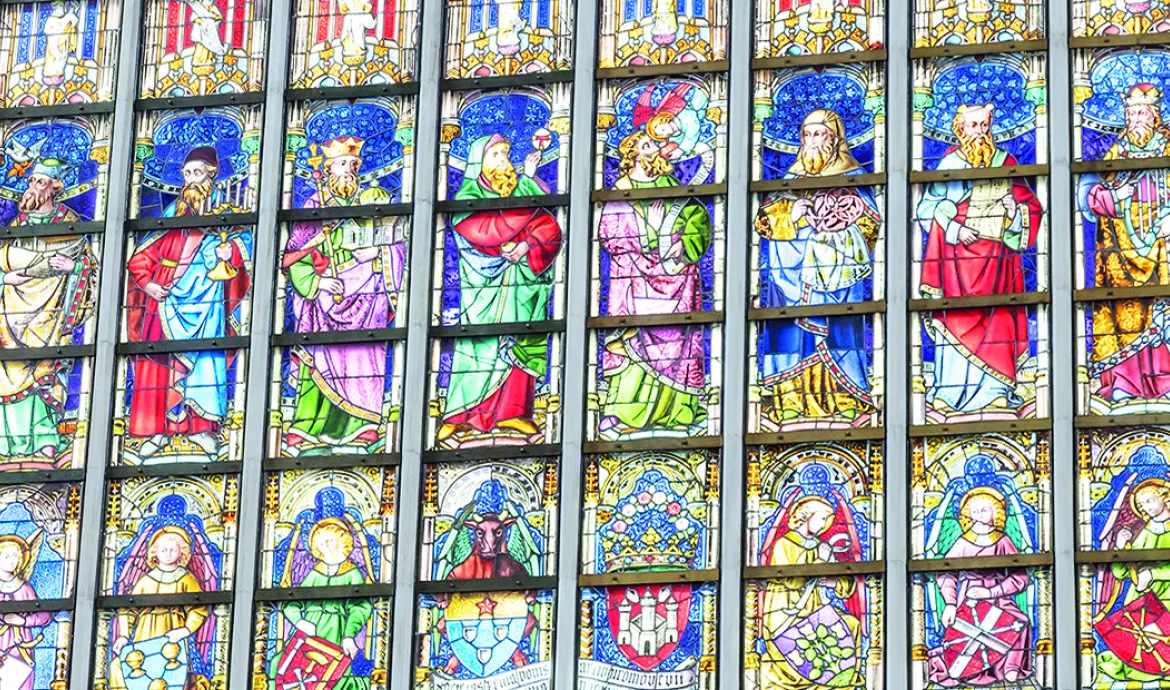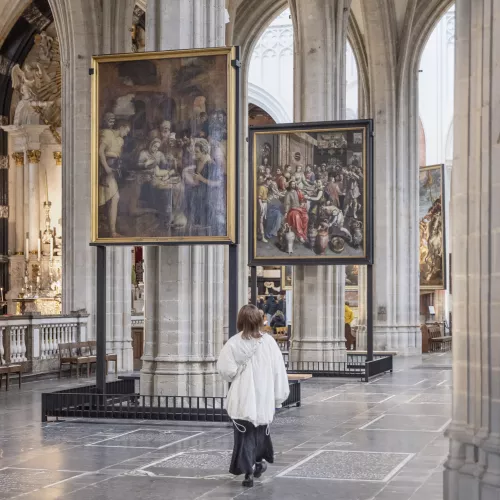Eight vertical bands lead heavenwards to God. They represent the art forms that elevate man above his station: music, eloquence, painting, architecture and silversmithing. It is somewhat surprising perhaps that theology and philosophy are represented in this list. Apparently profound reflection on man, the world and God is considered an artform. Of course, it also takes funds. To the far left shipping represents the economy.
God Glorified through the Arts
I could take a bite off the sun
To stop the fire from dying inside me,
I could swallow a stormy sea
So that my anger will not ebb
I would yield to all possibilities
If I could see you without restraint
Till I see you Untied.
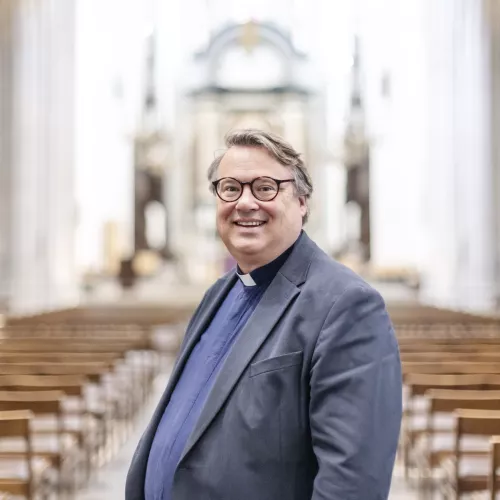
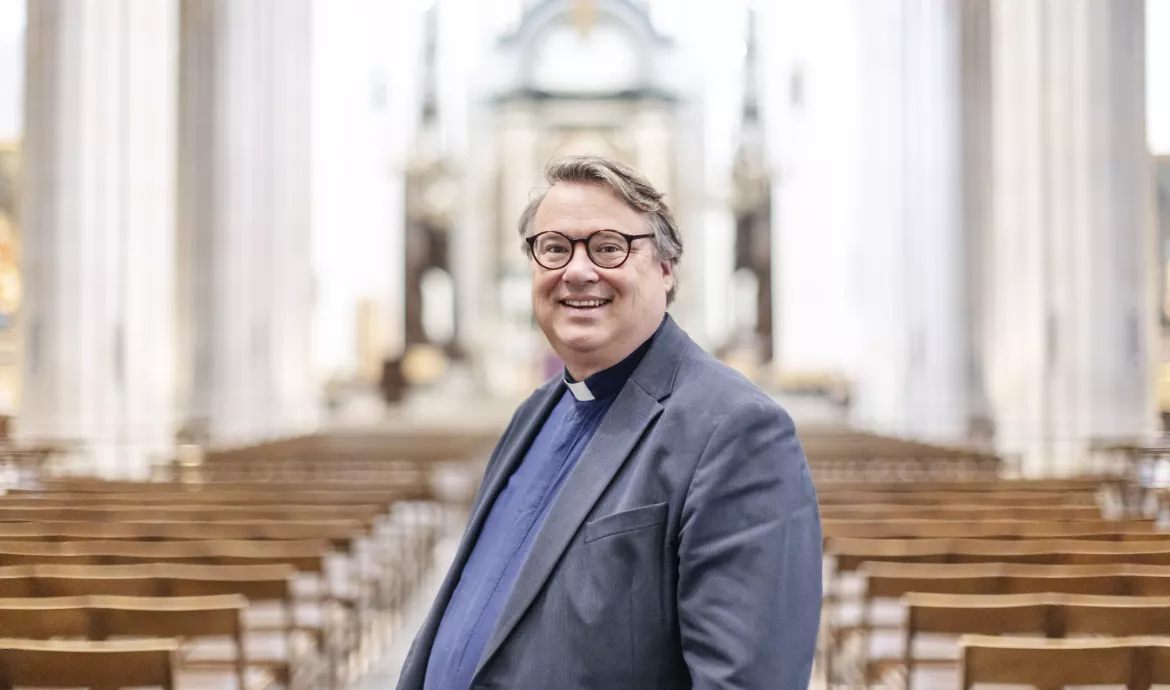
God Glorified through the Arts
Counting from the right, eloquence is the fourth band. The coat of arms at the bottom is that of the magistrate, the city’s college of aldermen. Thus the art of eloquence is connected to politics in the stained glass window. The biblical representative of this art is Isaiah. This Old Testament prophet is prepared by an angel to speak on behalf of God. The seraphim sears his lips with a burning coal to cleanse him of all injustice. An idea for present-day politicians perhaps?
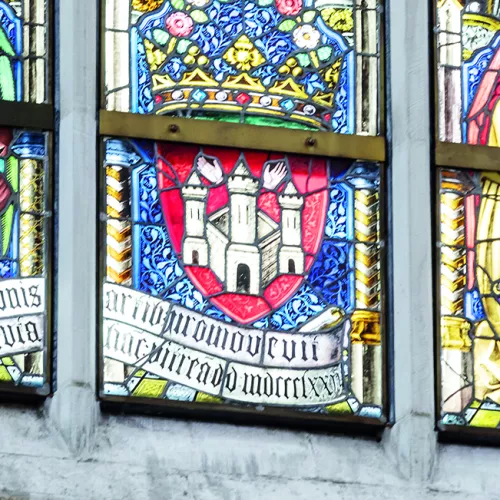
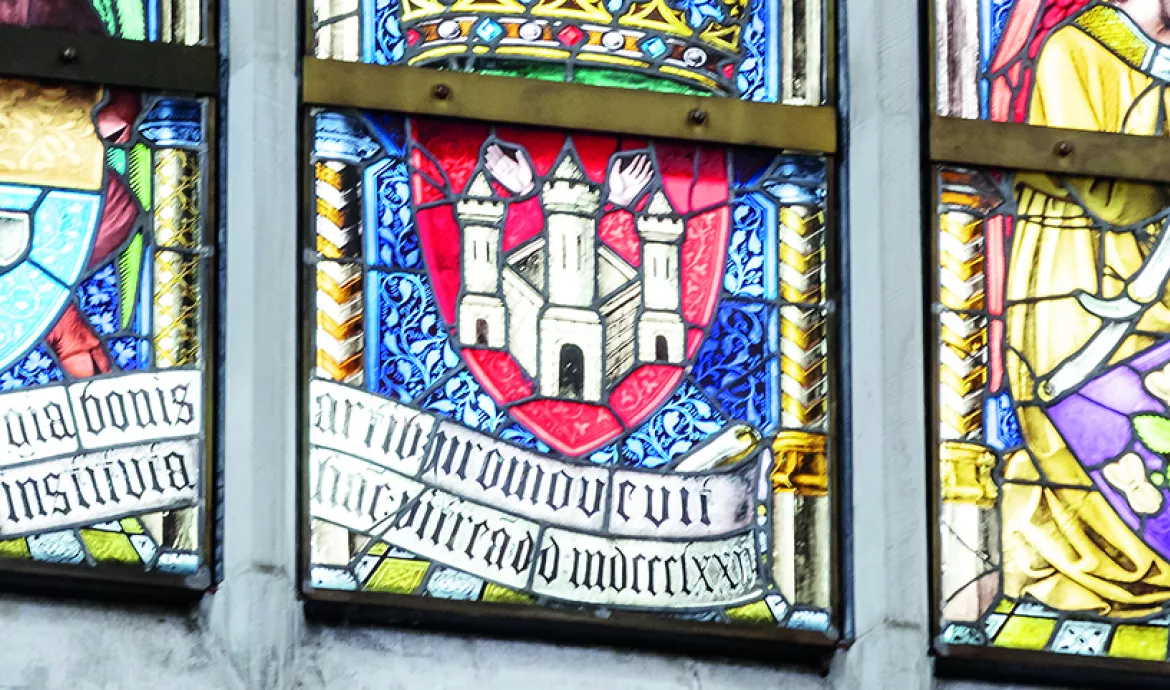
God Glorified through the Arts
This nineteenth-century stained glass window attests to the intertwining of art and religion. Eight bands start at the bottom with the human activities that make up the so-called liberal arts. Nowadays we would call them ‘liberal professions’. The bands climb upwards past a biblical figure and a saint towards God himself. The name of the stained glass window indicates that the arts pay tribute to God, who is depicted at the top as Father, Son and Holy Ghost. A present-day visitor can interpret this as an invitation to take stock of his own skills and wonder: from my position in society, how can I contribute to what truly matters in this life?
